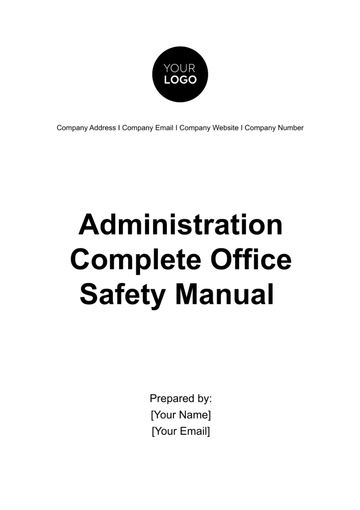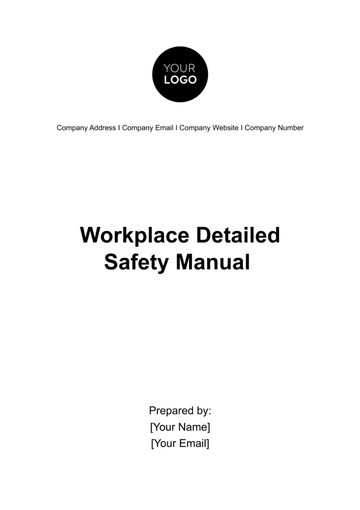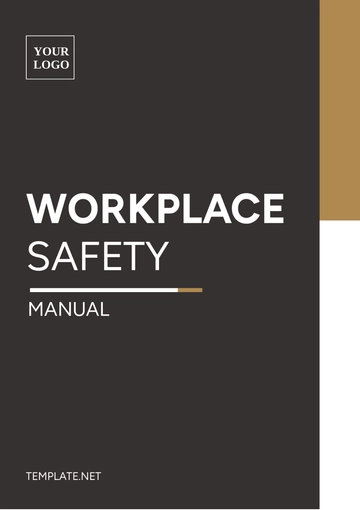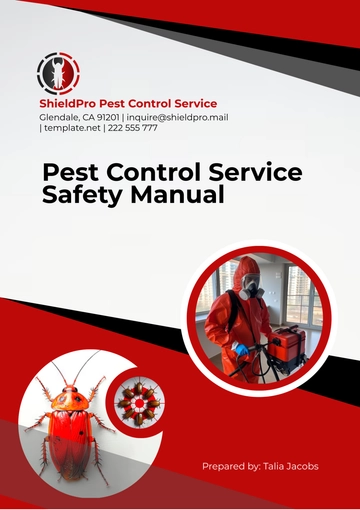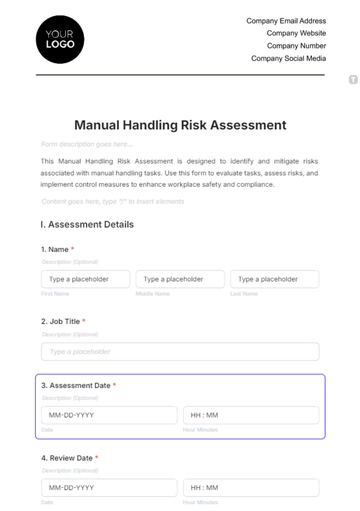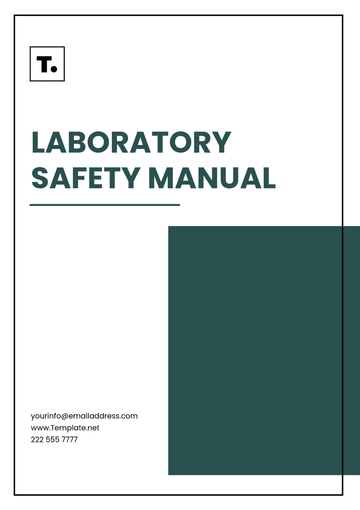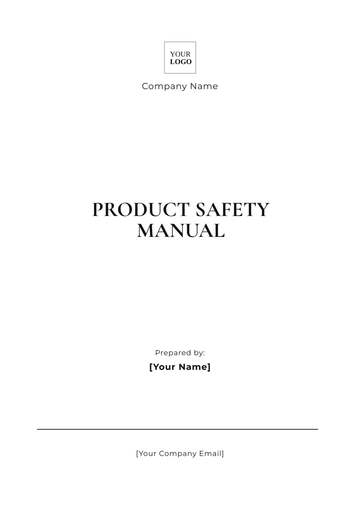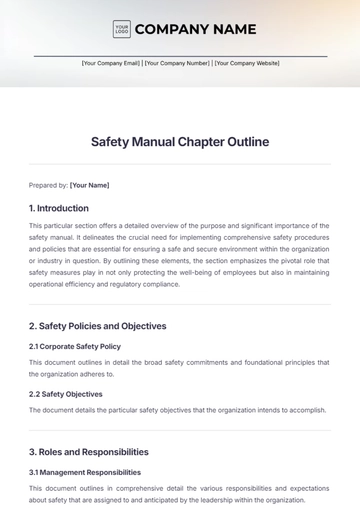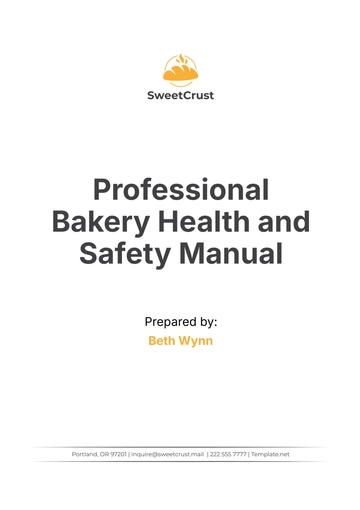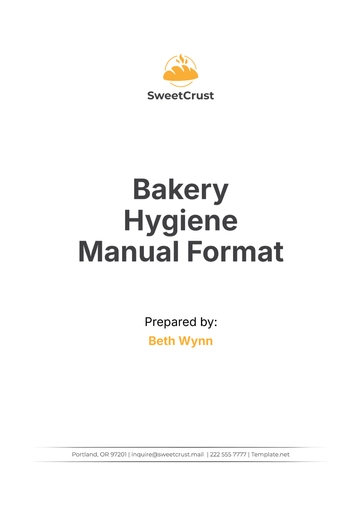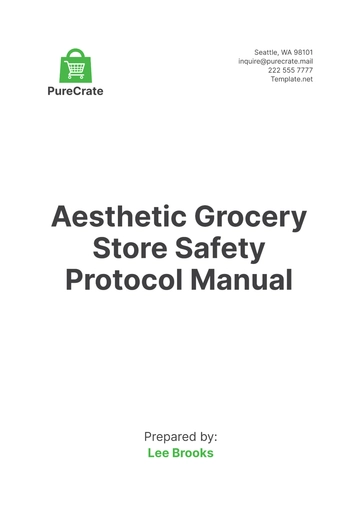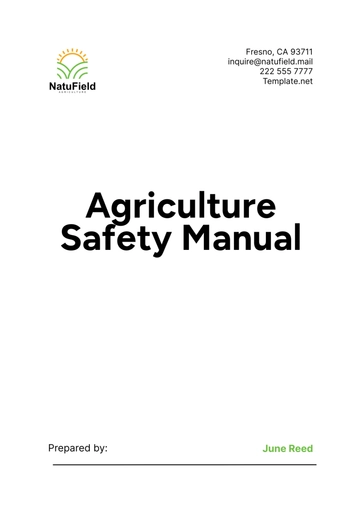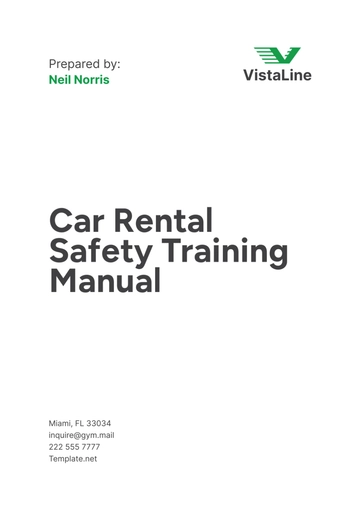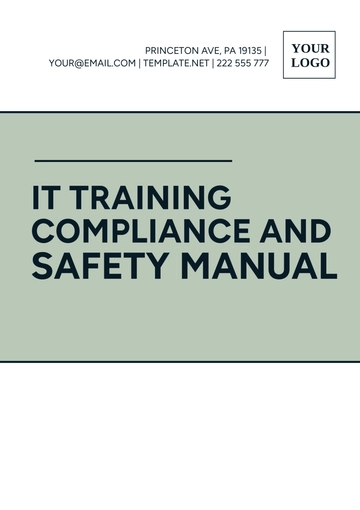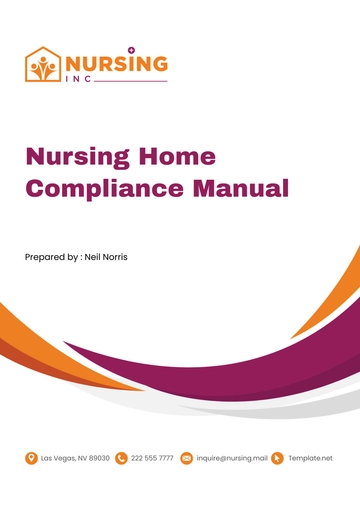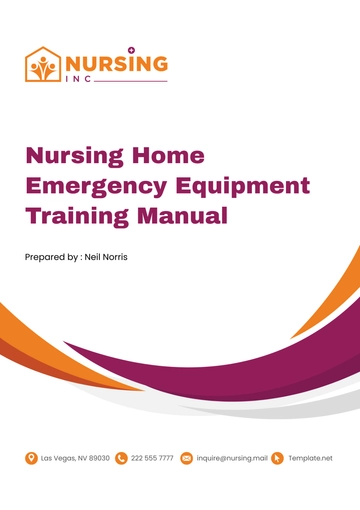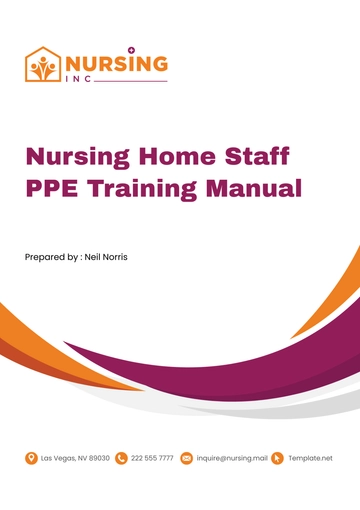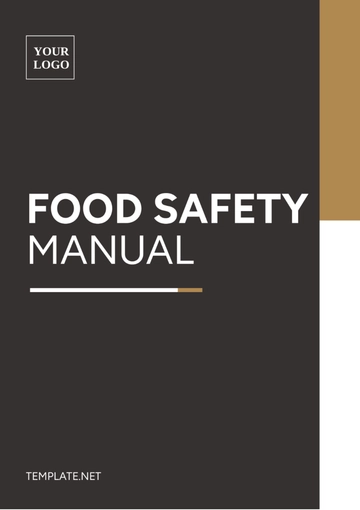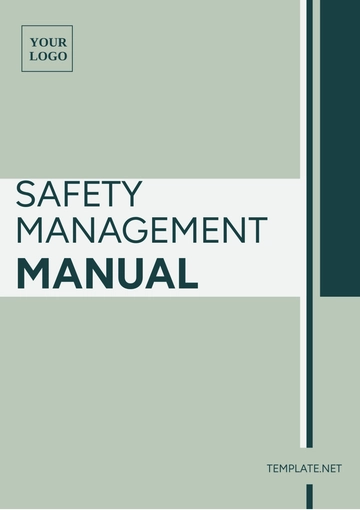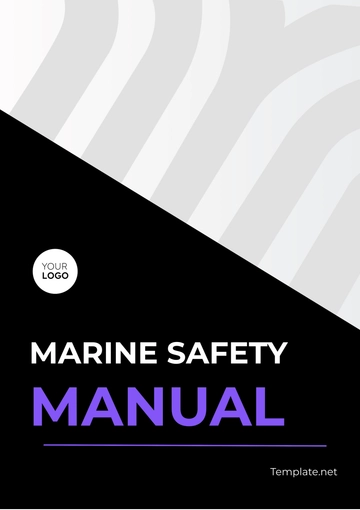Free Biohazard Response and Cleanup Manual HR
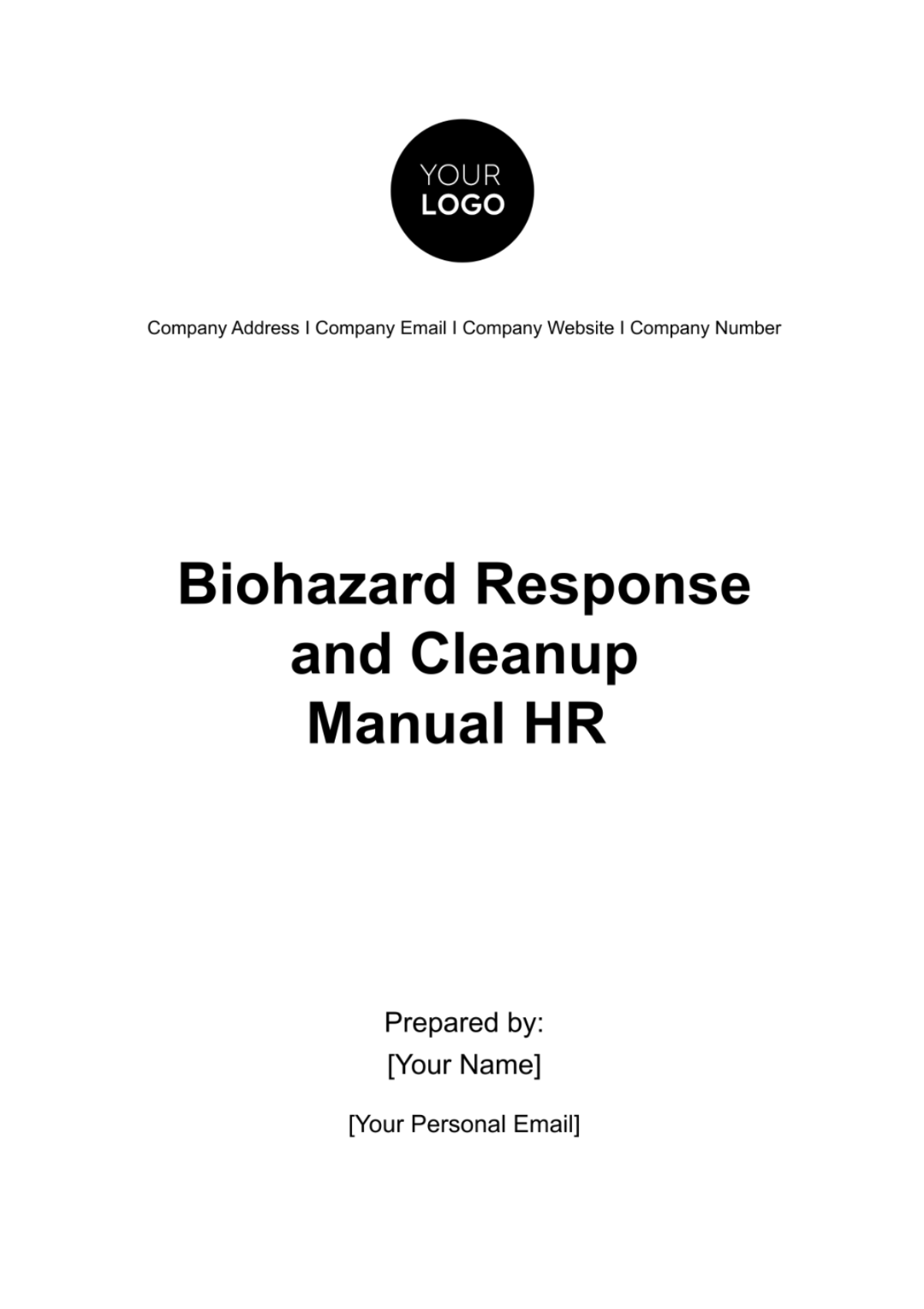
I. Introduction and Overview
Biohazard incidents in the workplace, though rare, have the potential to greatly affect not only the health and safety of employees but also the overall operational integrity of a company. With the increasing globalization of industries and businesses, there's a heightened exposure to varied biohazards. Research by the World Health Organization (WHO) suggests that 60% of all human diseases and approximately 75% of recent diseases affecting humans have an animal origin, indicating the widespread potential of biohazards. Furthermore, a recent case study of a multinational company highlighted how an unaddressed biohazard incident resulted in operational disruptions, legal implications, and significant financial repercussions. In such a context, a well-defined protocol for addressing biohazards becomes indispensable. This section aims to provide a comprehensive overview of biohazards, their implications, and the significance of an adept response system.
Purpose of the Manual
Designed with precision and thorough research, this manual endeavors to be the touchstone for HR personnel and other employees regarding protocols and procedures during a biohazard incident within [Your Company Name]. By adhering to the guidelines and protocols within, employees will be equipped with the knowledge to address and mitigate the risks associated with biohazards effectively.
Definition of Biohazards
Biohazards encompass a wide array of biological agents. These can range from infectious microorganisms, such as viruses, bacteria, and fungi, to hazardous substances derived from these agents. The Centers for Disease Control and Prevention (CDC) classifies biohazards into four levels, depending on their virulence and the danger they pose. It's crucial for employees to understand the nature of these agents, as they can pose significant threats to human health, impacting not just those directly exposed but also potentially leading to wider outbreaks.
Significance of Proper Biohazard Response and Cleanup
A proactive and informed approach to biohazard response and cleanup is not just a best practice—it's imperative for the health and safety of all employees. Besides the immediate health implications, effective management ensures compliance with regulatory bodies, preventing potential legal and financial repercussions. Moreover, a company's proactive stance in ensuring a swift and effective response can enhance its reputation, signaling its commitment to safety and health. Remember, the ripple effect of a single unchecked biohazard incident can reverberate through a company's entire ecosystem, affecting stakeholders, clients, and the general public. Through effective protocols and a culture of safety, we can insulate our operations and our people from potential harm.
II. Biohazard Identification and Risk Assessment
In the realm of workplace safety and health, biohazards pose a significant concern that demands meticulous attention. This section delves into the critical aspects of biohazard identification and risk assessment, ensuring that employees and management alike comprehend the potential dangers and the importance of their management.
Classification of Biohazards
TYPE | DESCRIPTION |
|---|---|
Bacteria and Viruses: | Among the most pressing concerns in biohazard identification are bacteria and viruses, often referred to as pathogens, which have the capability to induce diseases in humans. These microscopic organisms, though unseen by the naked eye, can have profound and far-reaching health consequences if not managed properly. |
Toxins: | Equally menacing are toxins, harmful substances that certain biological agents can produce. These compounds, when introduced into the human body, can lead to a spectrum of adverse effects, making toxin management a top priority in biohazard control. |
Human Fluids: | A less conspicuous yet equally perilous category encompasses human fluids, such as blood, saliva, and other bodily secretions. These fluids can serve as vectors for infectious agents, underlining the importance of recognizing and handling them with utmost care. |
Biohazard Sources in the Workplace
Potential sources of biohazards are diverse and can be found in various workplace settings. These sources include:
SOURCES | DESCRIPTION |
|---|---|
Laboratory Specimens: | Laboratories are hotspots for biohazardous materials, as they often handle infectious agents for research and testing purposes. Proper containment and disposal are essential here. |
Medical Waste: | Healthcare facilities generate a significant amount of biohazardous waste daily. This waste includes used needles, contaminated materials, and other items that must be managed safely to prevent exposure. |
Improperly Discarded Personal Protective Equipment (PPE): | Used PPE, if not disposed of correctly, can become a biohazard source. This is particularly relevant in the context of the COVID-19 pandemic, where discarded masks and gloves can carry the virus. |
Potential Health and Safety Impacts
Exposure to biohazards can result in a range of adverse health and safety consequences, including:
Diseases: Contact with pathogens can lead to infections and diseases, some of which may have severe or even fatal outcomes.
Respiratory Issues: Inhalation of airborne biohazards can cause respiratory problems, especially in high-risk environments like laboratories.
Skin Conditions: Direct contact with biohazardous materials can result in skin irritations, allergies, or dermatological issues.
Proper identification and management of biohazards are therefore essential for safeguarding the well-being of workers and the public.
Risk Assessment Procedures
Human Resources (HR), in collaboration with health and safety officers, play a crucial role in assessing the potential risks associated with biohazards in the workplace. This assessment involves:
Identifying High-Risk Areas: Identifying departments or locations within the workplace where biohazards are more prevalent, such as laboratories and healthcare facilities.
Analyzing Potential Exposure: Assessing how employees may come into contact with biohazards, whether through direct contact, inhalation, or other means.
Developing Mitigation Strategies: Once risks are identified, HR and safety officers work together to develop strategies for mitigating these risks, which may include training programs, improved containment measures, or enhanced personal protective equipment protocols.
In conclusion, understanding and effectively managing biohazards in the workplace are paramount for ensuring the health and safety of employees and the broader community. By classifying biohazards, identifying sources, recognizing potential impacts, and implementing thorough risk assessment procedures, organizations can create safer working environments and reduce the risk of biohazard-related incidents.
III. Response and Immediate Actions
In the event of a biohazard exposure or spill within the workplace, a swift and organized response is essential to minimize risks and protect the well-being of employees and the public. This section outlines the critical steps and protocols for responding to biohazard incidents, including first responses, safety protocols, communication procedures, and the engagement of professional cleanup teams.
First Response to a Biohazard Exposure or Spill
When confronted with a biohazard exposure or spill, the initial response is pivotal. To ensure a rapid and effective reaction:
Isolate the Affected Area: The first action should be to isolate the area of contamination. This prevents further exposure and contamination of surrounding spaces. Ensure that all personnel in the vicinity are made aware of the situation and promptly evacuated, if necessary.
Alert Nearby Personnel: Immediate notification of nearby personnel is crucial. This ensures their safety and helps in preventing accidental exposure to the biohazard.
Inform HR and Safety Department: Simultaneously, HR and the safety department must be notified without delay. Their swift involvement is vital for coordinating a comprehensive response and addressing the incident effectively.
Employee Safety Protocols
Employee safety is paramount during biohazard incidents. To safeguard individuals and contain the situation:
Evacuate Non-Essential Personnel: Non-essential personnel should be evacuated from the affected area. This reduces the risk of additional exposure and facilitates the response efforts.
Decontamination Procedures: Individuals exposed to the biohazard must follow established decontamination procedures as outlined in Section 4. Proper decontamination is essential to minimize health risks and prevent the spread of contamination.
Communication and Reporting Procedures
Clear communication and reporting procedures are vital to ensure that biohazard incidents are promptly addressed:
Use the Biohazard Alert System (BAS): The Biohazard Alert System (BAS) should be activated to report the incident. The BAS streamlines communication and ensures that the necessary parties are informed in real-time.
HR Coordination: HR plays a pivotal role in managing biohazard incidents. They should immediately coordinate with health and safety teams to initiate a structured response plan. This collaboration ensures a swift and well-coordinated reaction to the incident.
Engaging Professional Cleanup Teams
In severe biohazard incidents that exceed the capabilities of in-house personnel, it is imperative to engage professional cleanup teams:
Contract Licensed Biohazard Cleanup Specialists: HR, in consultation with safety officers, should contract licensed biohazard cleanup specialists when necessary.
These professionals are equipped with the expertise and specialized equipment to conduct thorough decontamination, ensuring that the affected area is safe for reoccupation.
In conclusion, a well-defined response plan is critical for mitigating the risks associated with biohazard incidents in the workplace. The outlined steps, from initial isolation and alerting personnel to employee safety protocols and professional cleanup, form a comprehensive framework to ensure that biohazard situations are managed effectively and with the utmost consideration for the safety and well-being of all involved parties.
IV. Cleanup and Decontamination Procedures
In the aftermath of a biohazard incident, the thorough and safe cleanup and decontamination of affected areas are of paramount importance. This section provides a detailed overview of the steps and guidelines for conducting a comprehensive cleanup while ensuring the safety of responders and the surrounding environment.
Personal Protective Equipment (PPE) Guidelines
To ensure the safety of individuals involved in the cleanup process, strict adherence to personal protective equipment (PPE) guidelines is imperative. All responders must be equipped with the following:
Gloves: These protect the hands from direct contact with biohazardous materials.
Safety Goggles: To shield the eyes from potential splashes, aerosols, or airborne particles.
Face Shields: An additional layer of facial protection to prevent exposure to biohazards.
Biohazard Suits: Full-body suits that offer complete coverage and prevent contamination of clothing and skin.
Cleanup Procedures by Biohazard Type
The approach to cleanup should be tailored to the specific type of biohazard encountered:
For Liquids: In situations involving liquid biohazards, it is crucial to employ absorbent pads or spill kits. These materials help contain and absorb the spill, preventing further dispersion and facilitating safe disposal.
For Solids: When dealing with solid biohazards, such as contaminated materials or debris, a gentle sweeping motion should be utilized to collect the material. Subsequently, the collected material should be placed into sealable containers to ensure secure containment.
Waste Disposal and Management
The proper disposal and management of biohazard waste are essential to prevent contamination and adhere to regulatory guidelines:
Biohazard Waste Containers: Biohazard waste should be carefully deposited in red biohazard bags or containers explicitly designed for the safe containment of biological materials.
Secure Storage: These waste containers should be stored securely in designated areas that are inaccessible to the general public. Furthermore, they must be appropriately labeled to indicate their contents.
Certified Disposal Agencies: The final step in the waste management process involves entrusting biohazard waste to certified disposal agencies possessing expertise in the safe and environmentally responsible disposal of such materials.
Decontamination and Sterilization Methods
Decontamination is the key to ensuring that affected areas are rendered safe for reoccupation. The recommended decontamination methods include:
Surface Cleaning: Thoroughly clean contaminated surfaces using a 1:10 bleach solution, a well-established method for disinfection against various biohazards. Ensure comprehensive coverage of surfaces and adhere to specified contact times.
UV Sterilization: When applicable, UV sterilization can provide an additional layer of protection by effectively eradicating residual biohazards from surfaces.
Validation and Verification of Cleanup
To validate the effectiveness of the cleanup process and provide assurance of safety, the following steps are essential:
Post-Cleanup Tests: Administer tests such as bacterial swabs to rigorously confirm that cleaned areas are entirely free from biohazards. These tests provide empirical validation of the cleanup's success and the safety of the environment.
In conclusion, adhering to well-defined cleanup and decontamination procedures is paramount for mitigating the risks associated with biohazard incidents. By following these comprehensive guidelines, organizations can ensure the safety of their personnel, protect the surrounding environment, minimize environmental impact, and maintain compliance with regulatory standards governing biohazard management.
V. Training, Documentation, and Continuous Improvement
The effective management of biohazard incidents and the maintenance of a safe workplace environment hinges not only on immediate responses but also on ongoing training, meticulous documentation, and a commitment to continuous improvement. In this section, we will explore these critical aspects in detail, shedding light on mandatory training modules, documentation practices, manual updates, and the importance of feedback mechanisms for perpetual enhancement.
Mandatory Training Modules for Employees
To cultivate a culture of biohazard safety within the organization, it is imperative to conduct periodic training sessions. These sessions, coordinated by the HR department, should encompass the following key elements:
Content Relevance: Ensure that the training modules are tailored to address the specific biohazard risks encountered within the organization, with a focus on high-risk areas.
Comprehensive Coverage: Provide employees, particularly those working in high-risk environments, with in-depth knowledge regarding biohazard identification, response protocols, proper use of personal protective equipment (PPE), and decontamination procedures.
Regular Refreshers: Recognize the dynamic nature of biohazard threats and offer regular refresher courses to keep employees up to date with the latest safety measures and protocols.
Documentation and Record Keeping
Transparency and accountability are upheld through meticulous documentation and record-keeping:
Incident Records: Every biohazard incident and the corresponding response measures should be thoroughly documented. This includes incident reports, response timelines, and the individuals involved in the response effort.
Maintenance of Records: Ensure that all records are maintained in an organized and secure manner, readily accessible for future reference or audits.
Regular Review and Updates to the Manual
Given the evolving nature of biohazard risks and best practices, the manual itself should undergo regular review and updates:
Annual Review: HR should collaborate with health and safety experts to conduct an annual review of this manual. This review ensures that the manual remains aligned with the latest industry standards and regulatory requirements.
Updating Procedures: Incorporate any necessary changes, revisions, or additions into the manual. This may include updates to response protocols, new decontamination methods, or changes in PPE recommendations.
Feedback Mechanism for Continuous Improvement
Promoting a culture of continuous improvement relies on the active involvement and feedback from employees:
Encouraging Employee Feedback: Employees should be encouraged to provide feedback after training sessions or biohazard incident responses. This feedback is invaluable for identifying areas of improvement in procedures, training modules, or response protocols.
Actionable Insights: HR and safety teams should carefully assess employee feedback and take actionable steps to address identified issues or implement suggested improvements.
In conclusion, the sustainability of a robust biohazard management system lies in ongoing training, documentation, and a commitment to continuous improvement. By conducting regular training sessions, maintaining meticulous records, updating the manual annually, and actively seeking employee feedback, [Your Company Name] can not only enhance their biohazard response capabilities but also foster a culture of safety and vigilance throughout the workplace.
- 100% Customizable, free editor
- Access 1 Million+ Templates, photo’s & graphics
- Download or share as a template
- Click and replace photos, graphics, text, backgrounds
- Resize, crop, AI write & more
- Access advanced editor
Prepare for safety incidents with Template.net's Biohazard Response and Cleanup Manual HR Template. Effortlessly develop comprehensive protocols for handling biohazard situations with this customizable and editable tool. Ensure employee safety, minimize risks, and comply with regulations by editing this with our Ai Editor Tool. This versatile template guides you through the creation of efficient response plans, promoting a secure work environment.

